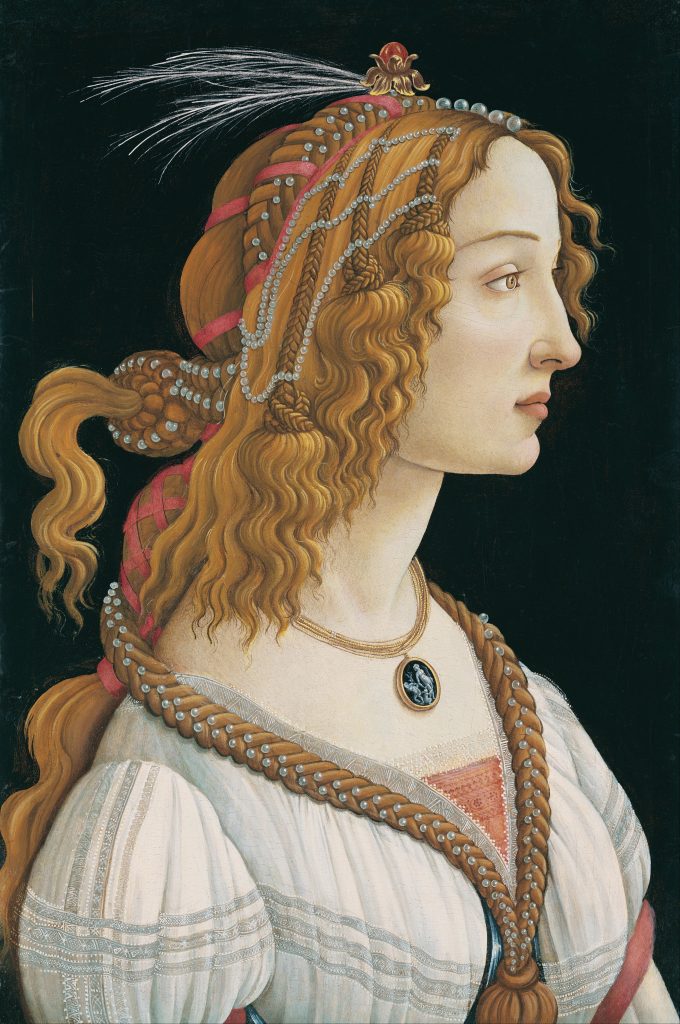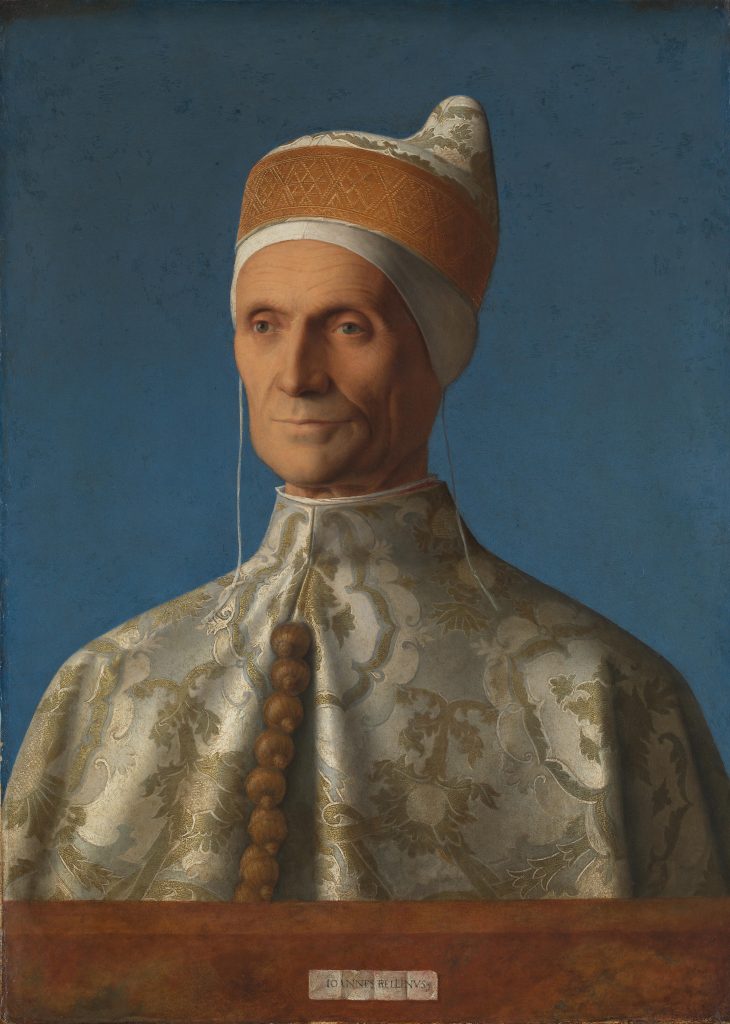Born near Arezzo, Italy, since 1512 active in Venice, died after 1553
Woman in profile
White marble relief
Height: 30 cm, width: 23.5 cm, depth: 8.5 cm
Provenance:
With Charles Beddington, London, 2014;
Private collection, England.
This marble relief depicts an elegant woman’s head in strict profile. The classical profile view, a motif from Antiquity, was initially adopted in the Renaissance for coins and medals before appearing in the form of stone reliefs as a conscious citation of Ancient Greece and Rome. The well-proportioned face – the closed lips, straight nose and calm expression – is framed by an unusual, elaborate hairstyle: her carefully plaited tresses, tied into a bow on her forehead, have been draped into a coil on her smoothly combed hair. From the temple, thick strands of hair fall onto the neck; several are turned slightly inwards giving the image a particularly sensuous appeal. The hair is additionally held in place by a narrow ribbon. The artistically arranged coiffeur gives this image of a woman a contemporary appearance. The robe over her shoulders, on the other hand, emulates models from Antiquity.
Stylistically, the unsigned relief is to be assigned to Venetian art of around 1520/30. The profile portrait in relief form was popular in the whole of Italy in the last quarter of the 15th century. In Venice, however, a unique style, influenced by Antiquity, evolved at the beginning of the 16th century, initiated through the work of Pietro and Tullio Lombardo. The classical facial features reminiscent of Antiquity and the precise execution of the hair, in particular, point to the sculptor Simone Bianco.
Simone Bianco came from the province of Arezzo. The exact place and date of birth are unknown. Bianco is first mentioned in documents in 1512 in Venice. As a successor to Tullio und Antonio Lombardo he had a decisive influence on the development of Venetian portrait sculpture in a secular context up until 1530. Unlike Florence, portrait sculpture in Venice in the 15th century was concentrated on public spaces. It was not until the first third of the 16th century that wealthy residents of la Serenissima gradually commissioned sculptors to make copies of ancient works or portraits in the style of works from Antiquity, with an increasingly individual character, for private households.
Simone Bianco, whose œuvre has been the subject of intensive research over the past few years, seemed to have been the driving force behind this development. The famous poet and a contemporary of his, Pietro Aretino, praised Bianco’s works, drawing comparisons with Titian.
Among other statements he also reported that three busts had been sent to the French king and that Bianco was “a decent person, a good sculptor and great friend.” It would appear that this artist and his delicately executed sculptures quite wrongly sank into oblivion. As he seldom signed his works, his sculptures were often not attributed to him. Bianco’s artistic legacy – often mentioned in sources – was consequently little known and his works frequently lay undiscovered as ‘works of Antiquity’ in museum depots.


